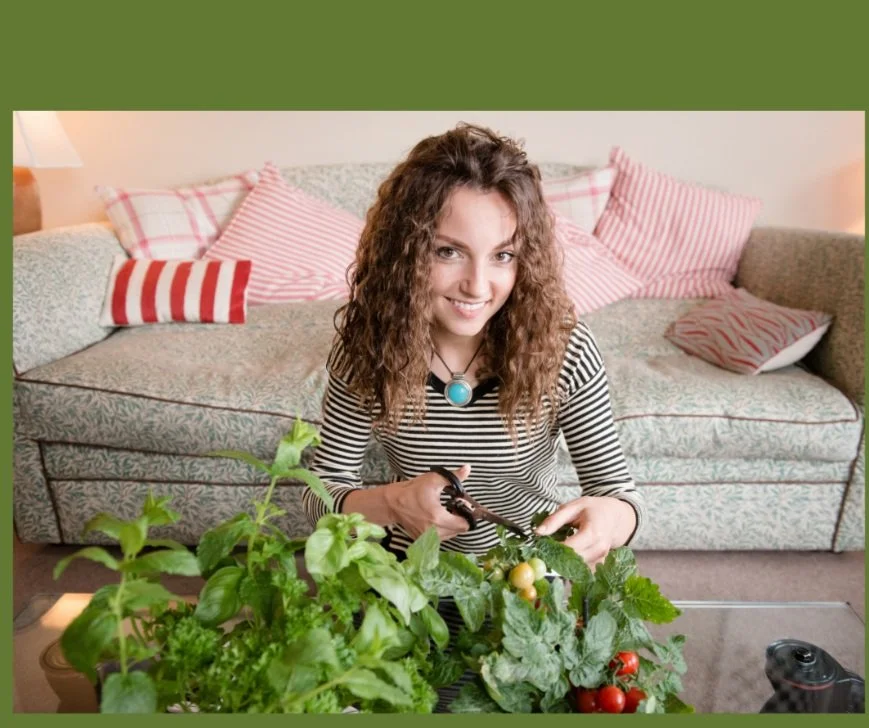Rhubarb is a fabulous plant and very easy to grow. It has hardly any pests and will flourish in a corner of your garden or in a container.
10 Fabulous Container Ideas for Urban Gardening
Containers are a fabulous way to grow plants. They can be used in small spaces, maximize growing space, and are efficient. Containers also add beauty to a patio, window, or walkway.
Let’s think beyond the typical ceramic pot. There are a lot of new stylish designs out there that are good for your plants and your budget!
Growing Jerusalem Artichokes in Zone 6
Grow Delicious Cabbage in USDA Zone 6
Growing The Best Corn in Zone 6B
Who can resist sweet corn on the cob at a summer barbeque? How about a bowl of home-grown popcorn for movie night? Corn is a great addition to any garden.
Corn does require a bit of extra care to protect it against pests and disease. Unfortunately, lots of our wildlife friends and those pesky insects love corn too!
How To Grow Bulbs in Pots for Urban Gardens
Growing Asparagus Year After Year in Zone 6
Asparagus is a fantastic early spring delicacy full of vitamins. It can be pricey at the grocery store, so growing your own is a good way to save money. Asparagus takes one to three years to establish itself before it is ready to harvest - but it’s proof that delicious things come to those who wait!
Growing Hot Peppers in USDA Zone 6B
Growing Winter Squash in USDA Zone 6B
Winter squashes and pumpkins are one of my favorite foods to grow in the garden. There is nothing better to celebrate the start of autumn than going out to your patch to pick some squash and pumpkins!
Squashes germinate quickly and produce robust plants. Growing pumpkins is also a great activity to do with kids who might get impatient waiting for slower plants like carrots or peppers to come up.
Humidity Guide For Indoor Plants
Controlling humidity in the home is important for your plant’s health. High levels of humidity promote bacteria, molds, and mildew. Not enough humidity causes plants to dehydrate quickly and possibly suffer cell damage.
When I moved from Kentucky (Zone 6B) to Wisconsin (Zone 5A) last year I realized how important humidity was. Last winter the humidity in my apartment dropped from a summer average of 60% to a winter average of 16%.
Growing Potatos in Zone 6B
Growing Sugar, Snow, and Snap Peas in Zone 6B
Peas are a member of the legume family and are delicious vegetables with high protein content and many vitamins. I love them because they are one of the first vegetables you can harvest in the spring, which makes them a great way to usher in warm weather. Peas are a cool weather crop and in Zone 6B we can get a good harvest in spring and fall.
Feeling Moody? These 5 (Pet-Friendly) Plants Will Help!
Air Circulation For Indoor Gardens
We don’t always think about air circulation as being a critical component to raising vegetables and fruits indoors. When food plants are grown outdoors they are naturally exposed to wind and air currents. In addition, both plant leaves and roots need air moving around them.
Modern homes are built to eliminate drafts and control airflow so we are warm or cool according to the season. This does not necessarily mean there is good air circulation.
Growing Sweet Peppers in Zone 6B
Sweet peppers are a delicious garden crop, and also high in micronutrients. They can also add a cheerful splash of color to any garden. Sweet peppers make a great addition to salads, in cooking, or just sliced and eaten as a snack.
Peppers can be a challenge for beginning gardeners to grow, especially when starting from seed. But, with the right planning, anyone can enjoy fresh sweet peppers from their garden.
Growing Cucumbers in Zone 6B
Cucumbers are a refreshing treat from the garden on warm days; they are delicious for snacking or as an addition to salads and drinks. You can also use cucumbers to make pickles, which are a great way to preserve a harvest.
Cucumbers make a valuable addition to any garden and are easy to grow once you learn how. This guide answers all your questions.
Kentucky Wasps and Hornets
Wasps. Most wasps are not hunting us down for prey or are overly aggressive. Wasps actually display a wide range of behaviors and social structures. Courting dances, determined builders, and skilled hunters all describe the wasp.
Let’s rethink our relationship with wasps. They play a valuable part in our ecosystems and like bees are beneficial pollinators.
Indoor Food Gardening: Growing Vegetables and Fruits In An Apartment
Living in an apartment has taught me many new ways to grow vegetables and fruits indoors. I have discovered that gardening is not limited to a plot of soil.
For many people living in an urban apartment or condominium means they can’t garden in the traditional sense. When I left rural Kentucky for urban Wisconsin, I was very anxious that it meant the end of my ability to have food security. Not to mention that I just loved getting my hands dirty and playing in the dirt.
Planting a Humane, Wildlife Friendly Yard
You can make your yard or garden a humane and vital place for wildlife. Habitat destruction is the primary threat to wildlife. The process of building roads and developing suburban neighborhoods is a leading cause of habitat decline.
By becoming a humane gardener and creating native habitat you create an oasis for wildlife, plants, and yourself. When you and your neighbors have friendly green space it creates corridors for wildlife to move around to find food, raise young, and live a natural life.
























